★★★
“Border control”
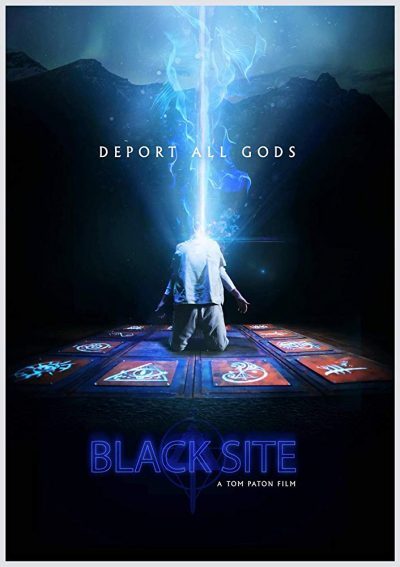 This Lovecraftian-inspired action/horror mix is full of good – or, at least, interesting – ideas. It plays almost like a Call of Cthulhu scenario, with the players having to defend the top-secret government facility of the title from a group of cultists who are attacking the base. They are aiming to liberate one of the Elder Gods, Erebus, who in the form of the human he has possessed (Johnson), is about to be deported back into the infinite darkness. This is the latest incident in an ongoing covert battle by humanity, which has been going on since the twenties, though with decreasing intensity. At least until now.
This Lovecraftian-inspired action/horror mix is full of good – or, at least, interesting – ideas. It plays almost like a Call of Cthulhu scenario, with the players having to defend the top-secret government facility of the title from a group of cultists who are attacking the base. They are aiming to liberate one of the Elder Gods, Erebus, who in the form of the human he has possessed (Johnson), is about to be deported back into the infinite darkness. This is the latest incident in an ongoing covert battle by humanity, which has been going on since the twenties, though with decreasing intensity. At least until now.
The central character is Ren Reid (Schnitzler), an operative of Artemis, the group running the site. She has dreams of becoming a field agent, but psychological instability – which just possibly, might be connected to Erebus and his role in the death of her parents – has always prevented her. She has to get the deportation specialist, Sam Levi (Buckingham) into the heart of the base, so he can sent Erebus on his way. However, the cultists, under their leader, Ker (Robinson-Galvin), are intent on stopping this from happening, by any means necessary. Meaning Ren, and to a (much!) lesser extent, Sam, have to fight every inch of the way.
There’s a lot of potential here, and when it’s realized, this is an enjoyable flick, spearheaded by Reid in a no-nonsense role. The fight choreography is well done, though almost inevitably, the facility appears largely lit by 40-watt bulbs – whether to “add atmosphere” or cover up the stunt doubling is probably a matter of opinion. The problems are more the bits between the fights, and in particular the lengthy sequences of Erebus sitting in the middle of his occult holding cell, jawing away to the two agents keeping an eye on him. Johnson simply doesn’t have one-tenth of the screen presence necessary to pull off portraying what is supposedly the fifth-oldest creature in the universe. He’s woefully unconvincing, unless you can see how said creature’s aeons of life experience would result in a somewhat douchey gym bro with bad hair.
Similarly, the flashback sequences involving Ren are both too frequent and not well enough carried out to add anything of value to the narrative, coming over as empty padding. While this is a universe I’d like to hear more about, if the film really wanted to be a Lovecraftian take on The Raid, as it seems, it should have stripped away all the back-story, since we’re given inadequate reason to care. Stick to the basics of Ren trying to get Sam to the spot where he can carry out extraordinary rendition on his target, and we’d be better off. Though I’m still trying to figure out the apparent political commentary built into the concept here. It seems to be suggesting, given a sufficient level of threat, it’s fine to abolish normal standards of justice, bypassing a trial and proceeding straight to the punishment. That’s an almost refreshingly anti-liberal point of view.
Dir: Tom Paton
Star: Samantha Schnitzler, Mike Buckingham, Kris Johnson, Jennifer Wilkinson
[This review originally appeared on Film Blitz, as part of a “31 Days of Horror” feature]





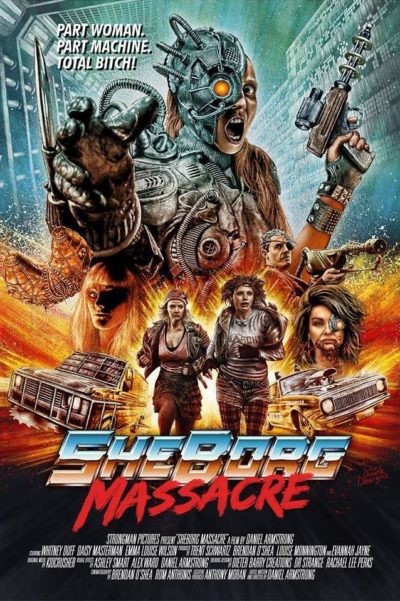 From the director of
From the director of 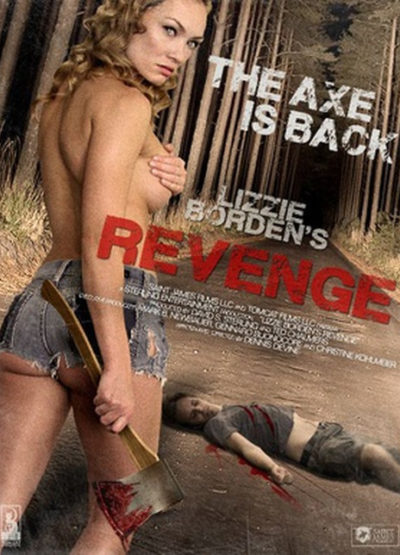 It would, certainly, be easy to look at the poverty-row production values here, and dismiss this contemptuously as a bad film. I mean, the very first shot supposedly sets the scene at the infamous New England house in 1892, where Lizzie Borden took an axe and gave her mother forty whacks. But
It would, certainly, be easy to look at the poverty-row production values here, and dismiss this contemptuously as a bad film. I mean, the very first shot supposedly sets the scene at the infamous New England house in 1892, where Lizzie Borden took an axe and gave her mother forty whacks. But 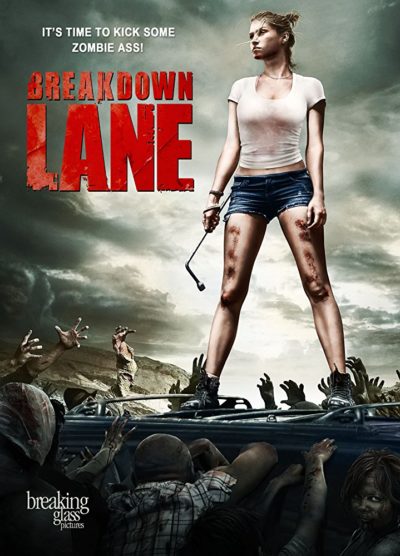 An initial twist on the zombie apocalypse and an appealing heroine aren’t enough to save this. By the end, while said heroine has transformed into a mayhem-dealing machine, any fresh elements have been discarded, for a low-budget rehash of ones which we’ve seen far too often already. It starts intriguingly, with Kirby Lane (Moore) “ambushed” by a woman in a camper with a sick man at a gas station, while on the way to meet her boyfriend (Cushing). When her car breaks down in the middle of absolutely nowhere, the only connection to the outside world is Max (Howell), the agent for her on-board emergency help provider. But things in the outside world are deteriorating rapidly, and the tow-truck Max dispatches… well, let’s just say, it might be a while. Meanwhile, Kirby has to handle the perils which threaten her, including humans both infected and cannibalistic, as she tries to fulfill her promise to link up with Max.
An initial twist on the zombie apocalypse and an appealing heroine aren’t enough to save this. By the end, while said heroine has transformed into a mayhem-dealing machine, any fresh elements have been discarded, for a low-budget rehash of ones which we’ve seen far too often already. It starts intriguingly, with Kirby Lane (Moore) “ambushed” by a woman in a camper with a sick man at a gas station, while on the way to meet her boyfriend (Cushing). When her car breaks down in the middle of absolutely nowhere, the only connection to the outside world is Max (Howell), the agent for her on-board emergency help provider. But things in the outside world are deteriorating rapidly, and the tow-truck Max dispatches… well, let’s just say, it might be a while. Meanwhile, Kirby has to handle the perils which threaten her, including humans both infected and cannibalistic, as she tries to fulfill her promise to link up with Max. Oh, be afraid… Be
Oh, be afraid… Be  I should start by explaining the above tagline. The main monster here is the aswang, a female vampiric creature from Philippines folklore. Its main distinguishing feature, is that after passing for human during the day, at night it splits its body in two, and the top half then flies around, killing people and eating their entrails, using a super-long tongue. There is a secret group, tasked with keeping mankind both safe and unaware of these, as well as any other creatures that go bump in the night. One of its top agents is Mahal (Dennis), who has a particular interests in aswangs (aswangii?), since she blames them for the death of her father.
I should start by explaining the above tagline. The main monster here is the aswang, a female vampiric creature from Philippines folklore. Its main distinguishing feature, is that after passing for human during the day, at night it splits its body in two, and the top half then flies around, killing people and eating their entrails, using a super-long tongue. There is a secret group, tasked with keeping mankind both safe and unaware of these, as well as any other creatures that go bump in the night. One of its top agents is Mahal (Dennis), who has a particular interests in aswangs (aswangii?), since she blames them for the death of her father. As the world goes through the zombie apocalypse, Molly (Allen) and boyfriend Nick (Mondesir) are elsewhere. Specifically, driving through the desert near Las Vegas, heading towards an airfield where they are going to catch a flight to Mexico – and, hopefully, safely. After their car gets stuck in the sand, Nick is attacked by a lone zombie (Riedinger), Molly flees on foot, striking out in the hopes of getting to the airfield, and pursued by the relentless creature. For it turns out the heroine is having her period, which allows the zombie to track her – and also lends a rather different meaning to the film’s title…
As the world goes through the zombie apocalypse, Molly (Allen) and boyfriend Nick (Mondesir) are elsewhere. Specifically, driving through the desert near Las Vegas, heading towards an airfield where they are going to catch a flight to Mexico – and, hopefully, safely. After their car gets stuck in the sand, Nick is attacked by a lone zombie (Riedinger), Molly flees on foot, striking out in the hopes of getting to the airfield, and pursued by the relentless creature. For it turns out the heroine is having her period, which allows the zombie to track her – and also lends a rather different meaning to the film’s title…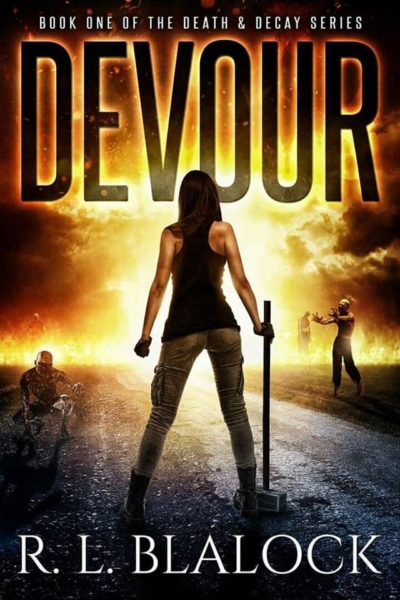 Back when I was growing up in Britain during the eighties, I was a voracious reader of horror fiction. The two staples of my literary diet were the works of James Herbert, who occupied the more “literary” end of the spectrum, and Shaun Hutson, whose novels were about as subtle as a kick to the groin. This likely tends towards the latter end of the spectrum, being a straightforward tale of survival during the zombie apocalypse. It begins as Olivia Bennett is heading home from lunch with her husband, when the St. Louis freeway on which she is driving becomes one of the first killing zones.
Back when I was growing up in Britain during the eighties, I was a voracious reader of horror fiction. The two staples of my literary diet were the works of James Herbert, who occupied the more “literary” end of the spectrum, and Shaun Hutson, whose novels were about as subtle as a kick to the groin. This likely tends towards the latter end of the spectrum, being a straightforward tale of survival during the zombie apocalypse. It begins as Olivia Bennett is heading home from lunch with her husband, when the St. Louis freeway on which she is driving becomes one of the first killing zones. Behind a remarkably generic and forgettable title sits an entirely reasonable slice of low-budget Irish action-horror. It’s clear creator Kavanagh knows what has gone before, and if the resources here don’t allow her to reproduce them on anything approaching the same scale, she knows her limitations and works well enough within them. Besides, who can resist a film that works a Ramones lyric into its dialogue? Taryn (Hogan) feels responsible for the death of her little sister, abducted and killed on the way home from school. She gets a chance to do something about it, when approached by the mysterious Falstaff (Parle) after her sister’s funeral. He reveals a secret world of demons and sacrifices – Taryn’s sister being one of the latter – and offers Taryn a chance for revenge, if she’ll come and work for him.
Behind a remarkably generic and forgettable title sits an entirely reasonable slice of low-budget Irish action-horror. It’s clear creator Kavanagh knows what has gone before, and if the resources here don’t allow her to reproduce them on anything approaching the same scale, she knows her limitations and works well enough within them. Besides, who can resist a film that works a Ramones lyric into its dialogue? Taryn (Hogan) feels responsible for the death of her little sister, abducted and killed on the way home from school. She gets a chance to do something about it, when approached by the mysterious Falstaff (Parle) after her sister’s funeral. He reveals a secret world of demons and sacrifices – Taryn’s sister being one of the latter – and offers Taryn a chance for revenge, if she’ll come and work for him. In an effort to pay off gambling debts their brother Michael (Haze) has run up, sisters Leah (Eastwood) and Vee (Manning) plan and execute a bank robbery. While smart in intent – they set up a diversion, and have a cunning escape route prepared – it’s not long before the operation goes wrong. The bank’s safe does not hold anywhere near the expected haul: fortunately, the assistant manager (Franco) helpfully informs them of an undisclosed vault in the basement holding six million dollars in cash. Sending some of their gang down to the vault, The sisters can only watch on CCTV aghast, as the men are picked off by mysterious figures. For, it turns out, the bank was the site of a robbery in 1982, leading to a hostage situation that ended in multiple deaths. The ghosts of those involved are still in the basement, and opening the vault has apparently released them to take revenge.
In an effort to pay off gambling debts their brother Michael (Haze) has run up, sisters Leah (Eastwood) and Vee (Manning) plan and execute a bank robbery. While smart in intent – they set up a diversion, and have a cunning escape route prepared – it’s not long before the operation goes wrong. The bank’s safe does not hold anywhere near the expected haul: fortunately, the assistant manager (Franco) helpfully informs them of an undisclosed vault in the basement holding six million dollars in cash. Sending some of their gang down to the vault, The sisters can only watch on CCTV aghast, as the men are picked off by mysterious figures. For, it turns out, the bank was the site of a robbery in 1982, leading to a hostage situation that ended in multiple deaths. The ghosts of those involved are still in the basement, and opening the vault has apparently released them to take revenge.